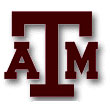|
Nanotechnology Colloquium
|
Colloquium Date: Monday, May 18, 2009
|
A bi-weekly event to present and discuss issues related to developments, applications and commercialization of nanotechnology.
"Measuring the ecotoxicity of metal nanoparticles using Daphnia magna"
Professor Sandra Whaley Bishnoi
Department of Biological, Chemical, and Physical Sciences
Illinois Institute of Technology
(VIDEO CONFERENCED from Illinois Institute of Technology, Chicago, Illinois)
Abstract:
Professor Bishnoi's group focuses on three specific research areas:
- the design and modification of nanomaterials;
- the development of nanoparticle based sensors;
- the environmental implications of nanotechnology.
She synthesizes metal nanoparticles that can be used as cancer therapy agents and biosensors. In addition to creating the particles, her group also modifies the surfaces of these particles with molecules that can be tracked using a method called surface enhanced Raman scattering (SERS). Through the design of appropriate surface chemistries, nanoparticles can be targeted directly to an organ or tumor requiring attention, be it for the delivery of encapsulated drugs or cancer therapy applications. These SERS active surface chemistries can also be used to develop biosensors to measure pH or glucose levels. Her group also envisions the creation of other "smart" functions on the surface of these particles, such as the ability to measure reactive oxygen species, which have been implicated in broad range of medical problems such as aging, stroke, toxicity, and diabetes.
As these types of nanoparticles are adopted for biomedical and technological applications, it is important to determine whether their unique physical and chemical properties pose a risk to the environment. One promising in vivo model for studying the ecological effects of nanoparticles released into the environment is a freshwater crustacean, called Daphnia magna, which plays a vital component in the food chain within streams and lakes. Experimentally, Daphnia are popular models because of their sensitivity to dissolved metals and other pollutants. To date, Daphnia have only been used in a few studies with commercially available nanoparticles. The Bishnoi group's capacity to synthesize, modify and then characterize the particles being tested significantly improves their ability to separate toxicity of the materials tested from any matrix effects coming from the use of commercially obtained nanoparticle systems. This work will lay the groundwork for understanding the parameters that must be controlled before continuing toxicity studies with more advanced animal systems.
Bio:
Speaker: Professor Sandra Whaley Bishnoi
Professor Bishnoi, an assistant professor in chemistry at IIT, has a Ph. D in Chemistry from the University of Texas at Austin under the mentorship of Professor Angela Belcher (now at MIT). Dr. Bishnoi then completed a postdoctoral research assignment in the Electrical Engineering Department at Rice University under the guidance of Professor Naomi Halas after a brief stint in industry (IBM). Dr. Bishnoi has spent the last 10 years working at the interface of nanotechnology and biology, from the selection of viral coat peptides which specifically recognize semiconductor surfaces (Nature 2000) to the development of nanoscale sensors for biological applications (NanoLetters 2006). She has recently begun using Daphnia magna as a model organism for understanding the potential toxicity of nanoparticles released into the environment. This new research direction pulls from her expertise in biology, surface chemistry, and material science and hopes to provide guidance into designing nanomaterials to minimize their effect on our environment.
|
|
|
VENUE: You may attend the presentation from any
one of the following locations.
|

|
AUSTIN: Winstead PC
401 Congress Av., Ste 2100
Austin, TX 78701
512-370-2800
|

|
CHICAGO: Illinois Institute of Technology
Stuart Building, Room 212, 10 West 31st Street Chicago
IL 60616; Contact Jennifer Keplinger at keplinger@iit.edu to confirm attendence
|

|
CHICAGO: Special Venue
Schiff Hardin LLP
6600 Sears Tower
233 South Wacker Drive
Chicago, IL 60606; 312-258-5500
|

|
COLLEGE STATION: Texas A&M University
Wisenbaker Building (WERC), Room #049,
College Station, TX 77843;
979-845-8912
|

|
DALLAS: Winstead PC
5400 Renaissance Tower, 1201 Elm Street
Dallas, TX 75270; 214-745-5400
|

|
EL PASO: El Paso Community College
9050 Viscount, Bldg. B
El Paso, TX 79925
|

|
HOUSTON: Winstead PC
1100 JPMorgan Chase Tower
600 Travis Street
Houston, TX 77002
713-650-8400
|

|
SAN ANTONIO: Winstead PC
700 N. St Mary St., Ste 1900
San Antonio, TX 78205
210-277-6800
|

|
THE WOODLANDS: Winstead PC
600 Town Center One
1450 Lake Robbins Drive
The Woodlands, TX 77380
281-681-5900
|
|
|
Program begins at 11:30am [CDT] with a complimentary lunch provided by Winstead PC.
Presentation begins at 12:00pm.
Event Coordinators:
Richard Fink 512-339-5020x130 dfink@appliednanotech.net
Max Roundhill 512-339-5020x120 roundhill@appliednanotech.net
Chairman: Dr. Zvi Yaniv
Registration deadline is Friday, May 15 at 5:00 PM Central.
To register, please send an email to Nina Shuvalov
NShuvalov@appliednanotech.net with your preferred attendance location.
|
| |
|
|
NANOMATERIALS APPLICATION CENTER
Walt Trybula, Ph.D.
Director
Texas State University
San Marcos, TX
(512) 245-6062
|
DVDs of selected presentations from previous
speakers are available for a small fee (contact
Max Roundhill mroundhill@appliednanotech.net)
NanoExpress, a monthly email newsletter, is
devoted to providing information on technological
advances, applications, and business news to
nanotechnology professionals. To subscribe, go to
the web link
http://www.txstate.edu/nac/nanoexpress.htmlx
Return to the Schedule Page
|
|